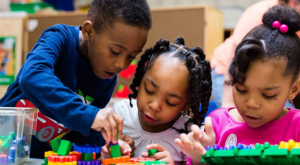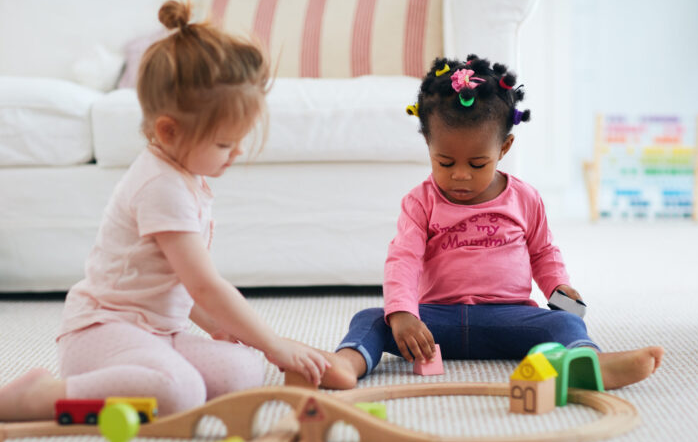|
Getting your Trinity Audio player ready...
|
In the wondrous tapestry of a child’s growth, social and emotional development are the vibrant threads that interlace, forming the essence of their personalities. These aspects, intertwined from the early years, shape a child into a social butterfly, ready to flutter through the world. Understanding this metamorphosis is crucial for parents, educators, and caregivers to provide the right environment and nurture social adeptness and emotional intelligence. Let’s embark on a journey through the stages, intricacies, and importance of social and emotional development in children.

The Foundation of Early Bonds
Building Trust: Infancy and Attachment
In the earliest stages of life, infants form their first social connections through attachment to their caregivers. This deep emotional bond serves as the foundation for a child’s sense of security and trust. Responsive parenting, where caregivers promptly attend to a baby’s needs, fosters a secure attachment and lays the groundwork for healthy social interactions.
The Power of Eye Contact and Smiles
Infants communicate through eye contact and smiles, starting a non-verbal dialogue with the world around them. These early social interactions help babies develop their understanding of emotions and create a sense of connection with others.
The Toddler’s Journey
The Curious Explorer: Toddlerhood and Social Play
As toddlers begin to explore the world, they also dive into the realm of social play. Playdates, daycare, and interaction with peers provide opportunities for children to learn about sharing, cooperation, and navigating social dynamics.
Expressing Emotions: Tantrums and Empathy
Toddlerhood is a time of emotional intensity. Tantrums, though challenging, are a way for children to express their feelings. Caregivers play a crucial role in helping toddlers identify and manage their emotions, setting the stage for empathy and emotional intelligence.
The School Years
Making Friends and Building Relationships
Entering school marks a significant milestone in a child’s social development. It’s a time when they begin forming friendships, experiencing peer pressure, and learning about conflict resolution. Educators and parents collaborate to create a supportive environment for healthy social interactions.
Empathy and Perspective-Taking
During their school years, children expand their capacity for empathy and understanding of others’ perspectives. Storytelling and discussions about feelings and emotions help children develop a deeper sense of empathy and compassion.
Adolescence: Navigating the Teenage Years
Identity and Independence
Adolescence is a period of self-discovery and identity formation. Teens strive for independence while still relying on the guidance and support of trusted adults. It’s a delicate balance that requires patience and open communication.
Emotional Resilience and Coping Strategies
As teenagers face life’s challenges, they develop emotional resilience and coping strategies. Healthy outlets such as sports, arts, or clubs provide opportunities for self-expression and stress relief.
Supporting Social and Emotional Development
Active Listening and Open Communication
Throughout a child’s journey of social and emotional development, active listening and open communication are paramount. Caregivers and educators who actively listen and encourage children to express their thoughts and feelings create a safe space for growth.
Teaching Emotional Regulation
Helping children recognize and regulate their emotions is a crucial skill for their well-being. Techniques like deep breathing exercises and mindfulness practices can be introduced to promote emotional regulation.
Challenges and Solutions
Bullying and Peer Pressure
Addressing challenges such as bullying and peer pressure requires a collaborative effort between parents, educators, and communities. Open dialogue, anti-bullying programs, and character education are tools to combat these issues.
Mental Health and Well-Being
Recognizing the importance of mental health is essential. Early intervention and access to counseling services can provide support to children facing emotional challenges.
Fostering Resilience
The Role of Play in Resilience
Play is a powerful tool for building resilience in children. It allows them to explore their emotions, develop problem-solving skills, and learn from both successes and failures.
Celebrating Individuality
Every child’s journey of social and emotional development is unique. Celebrating their individuality and fostering their strengths and interests are key to nurturing their self-esteem.
The Lifelong Journey
Continued Growth and Learning
Social and emotional development is not limited to childhood and adolescence; it continues throughout life. Lifelong learning, self-awareness, and adaptability are essential for navigating relationships and challenges in adulthood.
A Bright Future Awaits
As children grow into socially adept and emotionally resilient individuals, they carry with them the invaluable lessons and experiences that shape their future. The journey of the social butterfly is one of growth, connection, and the promise of a bright and fulfilling future.
You will find the following information useful:

